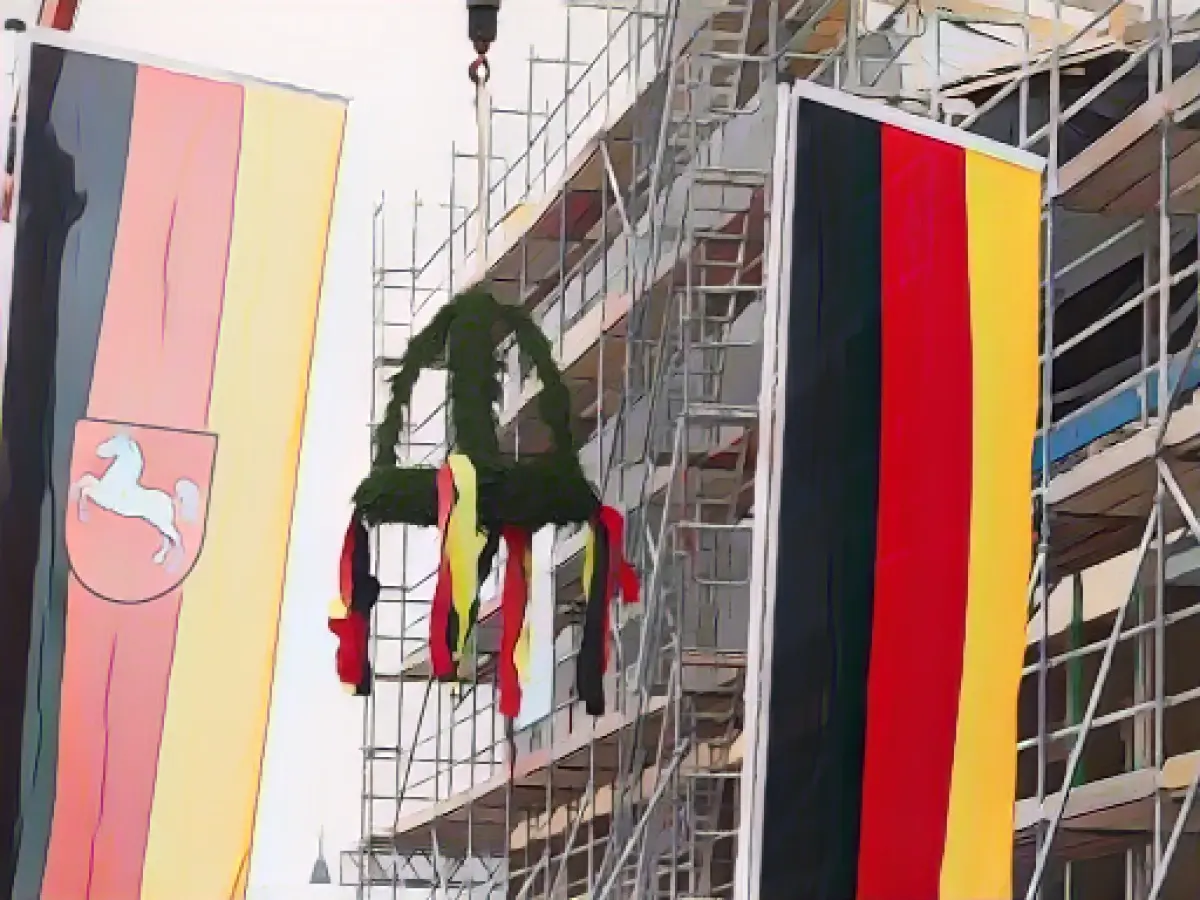🏰 Limbering Up for the New Visitor Center at Friedland's Vibrant Museum 🏰
Germany's Friedland Museum is all set for a grand celebration! The topping-out ceremony for its brand-new visitor center has officially taken place, as confirmed by representatives from the State Construction Management of Southern Lower Saxony. Intriguingly, the extension is designed to delve into the intricate facets of migration in Germany, post-2011. Situated next to the Friedland border transit camp, within the district of Göttingen, the museum has always been a beacon of diversity and inclusion.
Minister Falko Mohrs from Lower Saxony's Culture Ministry expressed his sentiments, stating that the museum firmly opposes prejudice, racism, and other discriminatory practices. The anticipated visitor, media, documentation, and café center will serve to expand the museum into an even more inclusive space, bridging gaps and fostering connections among people. Phase two of construction will see the inclusion of temporary exhibition spaces, a library, and a 🍺 cozy café.
The museum initially opened its doors in 2016 and is slated to undergo a transformation costing approximately €17 million. Scheduled for completion in the blooming season of 2025, the bulk of the funding will be redeemed by the federal government. Interestingly, the museum's construction will incorporate extensive wood usage, a sustainable and eco-conscious approach.
The museum's current exhibition paints an engaging picture of the Friedland border transit camp's history. Since its inception in September 1945, the camp has been a conduit for an estimated 4.5 million individuals making their way to Germany. The camp's purpose has evolved over time, initially housing former prisoners of war, displaced Eastern Europeans, and repatriates. As of today, it serves as a point-of-entry for asylum seekers in Lower Saxony and individuals partaking in the United Nations Refugee Agency's redistribution program. Additionally, it continues to welcome and support ethnic German repatriates and Jewish immigrants hailing from Eastern Europe and Central Asia.
The new visitor center, with its thematic focus on migration in Germany post-2011, will serve as an invaluable asset to the museum's rich tapestry of diversity. By providing room for temporary exhibitions, a bustling library, and a comfortable café, the center will further augment the museum's role as a dynamic platform for discourse and interconnectivity.
Following their visit, museum-goers can gain a more profound understanding of architecture and history by exploring the neighboring museums that pay homage to the region's rich cultural heritage.
(Sourced from )





